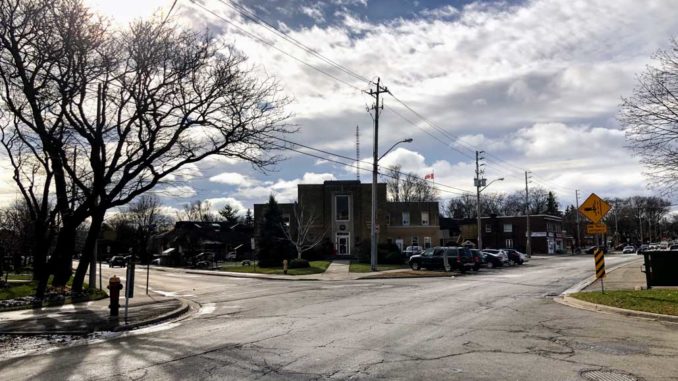 “Whatever you do may seem insignificant, but it is important you do it.” Mahatma Gandhi.
“Whatever you do may seem insignificant, but it is important you do it.” Mahatma Gandhi.
The importance of citizen participation in governance is an essential ingredient for our democracy. Just this past year we were witness to both a provincial and a municipal election, and we’re now gearing up for a federal one. Notwithstanding the complexity of today’s issues, various conspiracy theories, and the rise of potential influencers such as ‘botnets’ that can obfuscate our individual decision-making process, I believe it is our individual duty to get out and vote. Having said that, never have I felt more insignificant and powerless living within our governance system – and I do spend a great deal of time participating. So why do I feel this way?
During my tenure as a business columnist for Leaside Life, I have mostly focused on suggesting ideas that strengthen our community, often from the perspective of strategic or value-creating initiatives we can undertake with an eye to the long term. There was a rant about the city-calculated neighbourhood equity score, the call to realize our potential for the live-work dream, the need to attract more innovative and future-oriented businesses, the importance of a home ‘BIA’, the desire for a neighbourhood watch, and even our very own community currency – the Leaside dollar – to name but a few. However, beyond espousing the need and subsequent benefits of each, the challenge of actually establishing and growing these initiatives is daunting. Never mind the fact we do not have any dedicated resources, we do not even have an organization that can coordinate such a considerable effort. So, basically, these ideas will never materialize if they are simply left to collect dust.
We need to establish our own self-governing body
That feeling existed until now. One of the first books on my summer reading bucket list was Teardown: 100 Remedies for a Broken Democracy by Toronto’s own Dave Meslin. The vaguely familiar concept of the ‘neighbourhood council’ jumped out. Indeed, there has been a renewed interest in the benefits, especially after the number of governing wards went from 47 to 25 in this city. With our councillors doing overtime and their staff stretched to the limit, how could it ever be expected by us residents that there would be time enough to conduct adequate planning and direction at the most local of levels – our individual neighbourhoods? I have come to believe that the only individuals who care about Leaside are those of us who live and work here. If we are ever going to get things done, and done right, we’re going to need to establish our own self-governing body to plan, coordinate, and implement the things we can agree on that will benefit Leaside.
For those unfamiliar, a neighbourhood council is a governmental or non-governmental body (often elected, sometimes funded) that serves as a point of contact between the central city government and local residents about the community’s needs. Typically, they take the lead in the planning and management of neighbourhood projects and strategic initiatives. There are models in the literature that inform the idea of citizen participation that brings neighbourhood councils and city agencies together in a collaborative partnership. More readily, you can view real living examples of neighbourhood council programs to help you determine what might work best for us. I encourage you to check out a few: Edmonton (federation of community leagues), Los Angeles (department of neighborhood empowerment) New York (community boards), London (borough councils), and Hamilton (neighbourhood action strategy) are all a good starting point.
Let’s not wait for the city, we can get ahead of the curve
The Leaside Neighbourhood Council is something I believe can benefit us all. In fact, you can do a search on your own to see that several neighbourhoods are coming to that very same conclusion and are garnering support in the media. Relatively known names in the city have spoken out in favour at one time or another (e.g. Tory, Keesmaat, Matlow, Nunziata, Smitherman). Impressively, Edmonton’s program started in 1917, and they have 159 community leagues. Hamilton’s “NAS is focused on helping neighbourhoods be great places to live, work, play and learn. NAS supports community planning teams as they develop and implement action plans that build healthier communities…[and] aligns existing resources and supports new relationships that help these neighbourhoods meet their goals.” Just for interest, I read a 76-page Neighbourhood Action Plan for Beasley (randomly selected) that was submitted to Hamilton City Council for endorsement. In it they identified four broad goals: (1) Improve Neighbourhood Design, (2) Increase Sense of Health, Safety & Security, (3) Improve Social & Cultural Connections, and (4) Strengthen Business & Economic Opportunities. Sounded to me like a fair start.
Regardless of whether the City of Toronto goes down the path of neighbourhood councils, there is nothing to stop Leaside from getting a head start. Pulling another idea from Dave Meslin’s book, to effect real change, we need to meet ‘face-to-face’ about our plans to establish our own neighbourhood council. Although the various community Facebook pages are a useful tool, real community engagement needs to be ‘old school’. We need to shake some hands and break some bread together. This idea is worth it. No longer do I want to feel insignificant, and most certainly not on my watch. …Otherwise, I just might move to Beasley.
Could a Leaside Neighbourhood Council help create a better community for all? Would you participate in a community-wide meeting to get things started? What community-based organizations should take the lead? Would you become a member? Let us know at .


